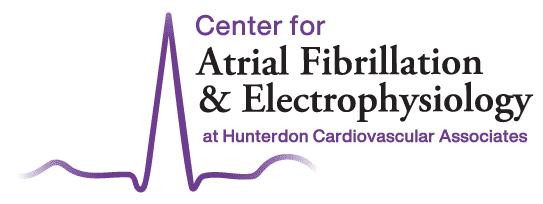Electrical cardioversion is a common treatment for cardiac arrhythmias, including atrial fibrillation (AFib). You may benefit from this treatment if you are experiencing AFib in order to restore a normal rhythm.
Here’s how electrical cardioversion works and how to request an appointment with Hunterdon Cardiovascular Associates if you need treatment for a heart condition.
What Is Electrical Cardioversion?
Electrical cardioversion is a procedure during which an abnormal heart rate is restored to a normal rhythm. During this treatment, a high-energy shock is sent to your heart to disrupt the abnormal signaling causing your arrhythmia. This forces the heart to reset and resume a normal rhythm and beating pattern.
Electrical cardioversion can be used to treat several types of arrhythmias, including AFib, atrial flutter, supraventricular tachycardia, and ventricular tachycardia.
What Would Cause the Need for Electrical Cardioversion?
You may need electrical cardioversion if you are experiencing AFib or if your arrhythmia is not responding to other treatments. This procedure may also be used to treat patients who experience recurrent AFib with severe symptoms or patients who experience AFib episodes for a prolonged duration.
A doctor specializing in cardiology can determine whether you’re an ideal candidate for electrical cardioversion based on your symptoms and medical history.
What Is the Procedure Like?
Electrical cardioversion is performed under sedation, which means you may be required to abstain from eating or drinking after midnight the evening before your procedure.
When you arrive at the treatment center, you will be asked to lie down on a table. Large, soft electrode pads that are connected to the cardioversion machine will be adhered to your chest and back. One patch is applied to the upper right part of your chest, and the other patch is placed either under your left shoulder blade or on the lower left part of your chest. If necessary, a member of your treatment team will shave patches of hair from your chest to ensure the pads stick.
Next, you will be given sedatives through an intravenous line to help you relax and fall asleep for the duration of the procedure. Your cardiologist will analyze your heart rhythm to determine the level of electric shock needed and use the cardioversion machine to send the current to your heart and restore a normal rhythm.
If your heart rate does not return to normal after the first attempt, your cardiologist may send a subsequent higher-energy shock to your heart. You will wake up five to ten minutes afterward when the effects of your sedative wear off and be taken to a recovery room where you can be closely monitored for at least one hour.
The steps in your procedure may be slightly different from those above based on the type of arrhythmia being treated and whether you have a permanently implanted device such as a pacemaker or defibrillator. Your cardiologist can talk to you in greater detail about what to expect during electrical cardioversion based on your condition.
What Can Someone Expect From the Procedure and Recovery?
Many patients who receive electrical cardioversion can resume their usual activities relatively quickly. You may experience mild side effects for a few days following your procedure, including sleepiness, fatigue, leg muscle soreness, and skin irritation where the pads were placed.
You may also be prescribed blood thinners or other medications to prevent an abnormal heart rhythm in the future. Your cardiologist will follow up with you regularly to evaluate, monitor, and treat your heart condition as necessary.
Hunterdon Cardiovascular Associates is committed to providing the highest quality of care in a patient-centered environment. Our offices are conveniently located in Flemington, Clinton, and Bridgewater. We have subspecialty centers available to ensure our patients receive the proper care for their condition.
Contact HCA today at (908) 788-1710 to make an appointment with one of our cardiologists if you think you may need electrical cardioversion.
